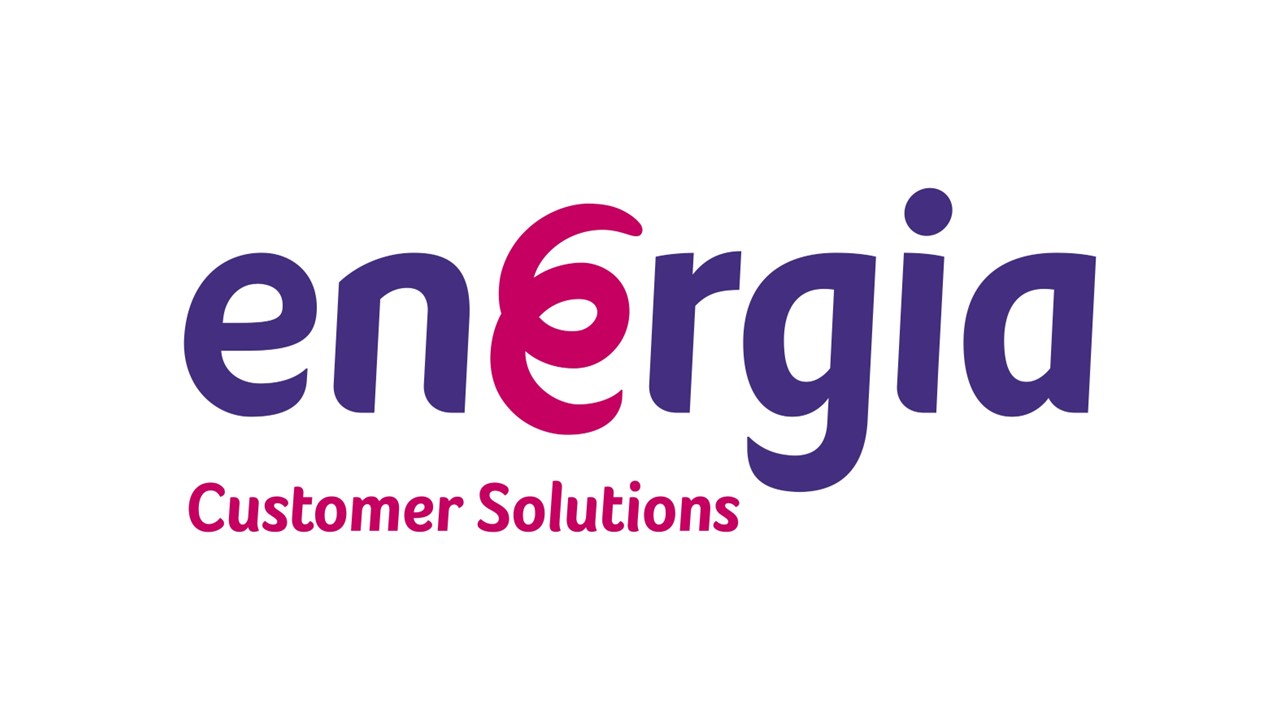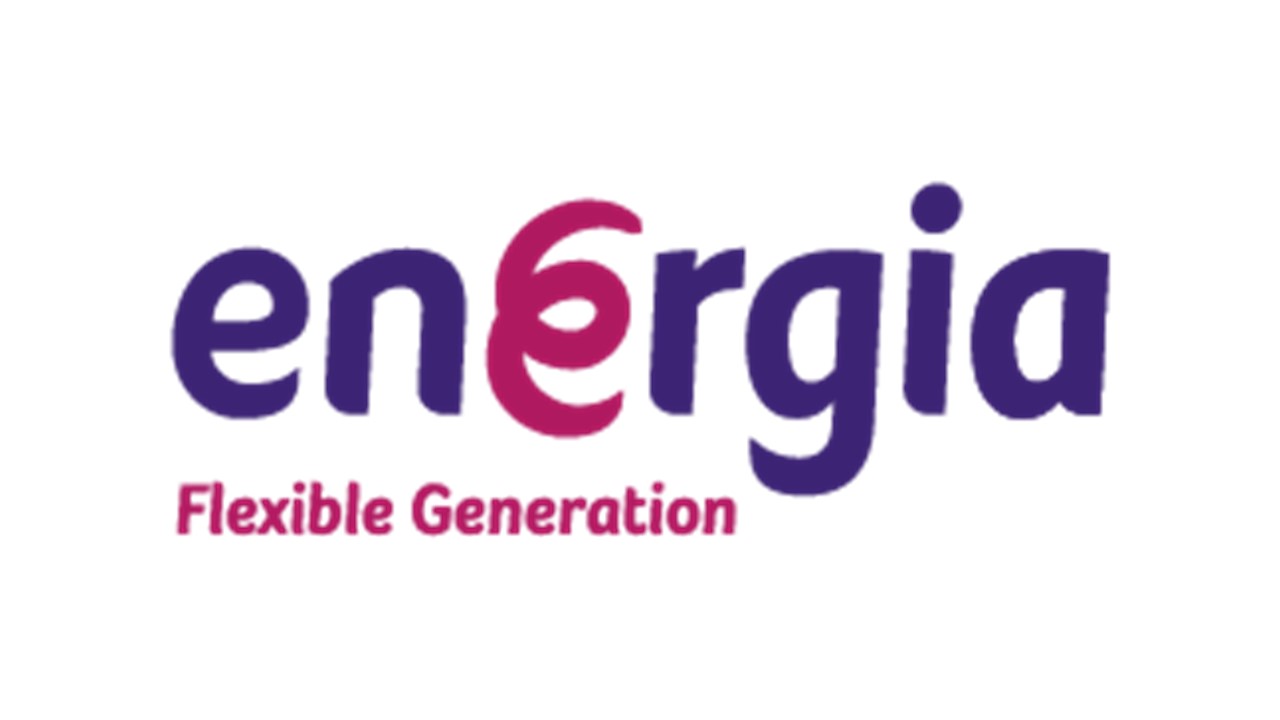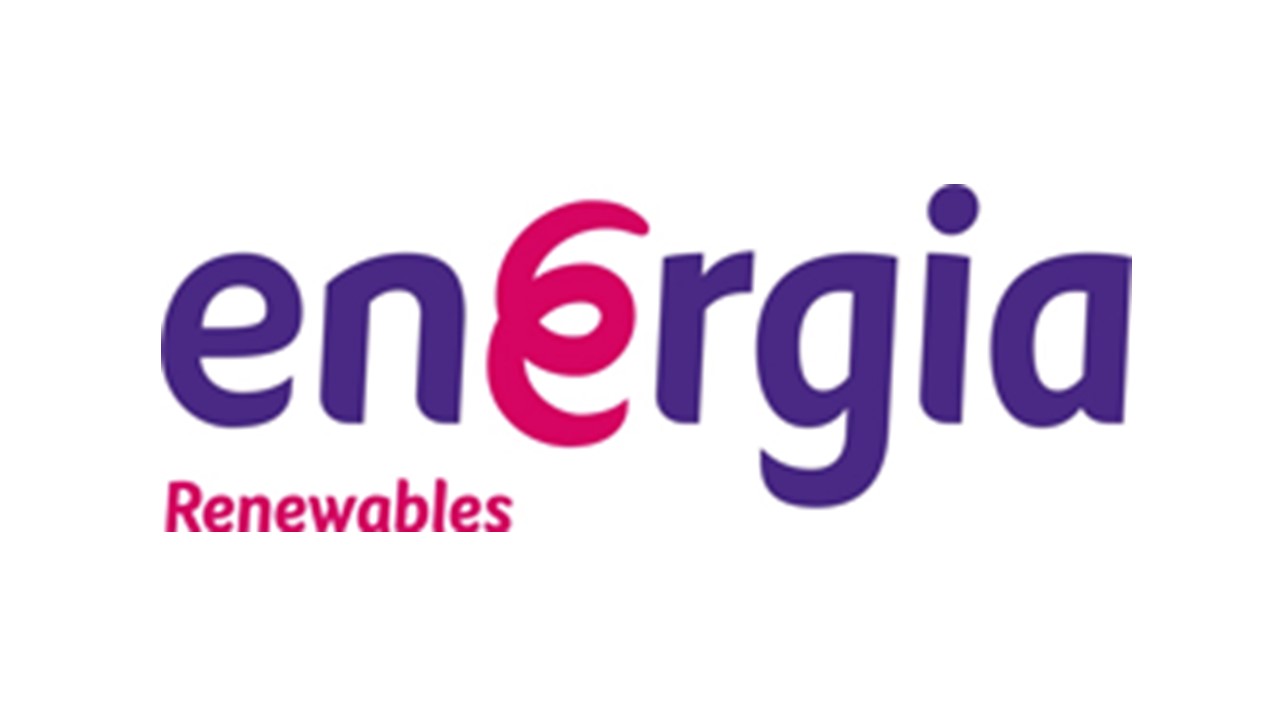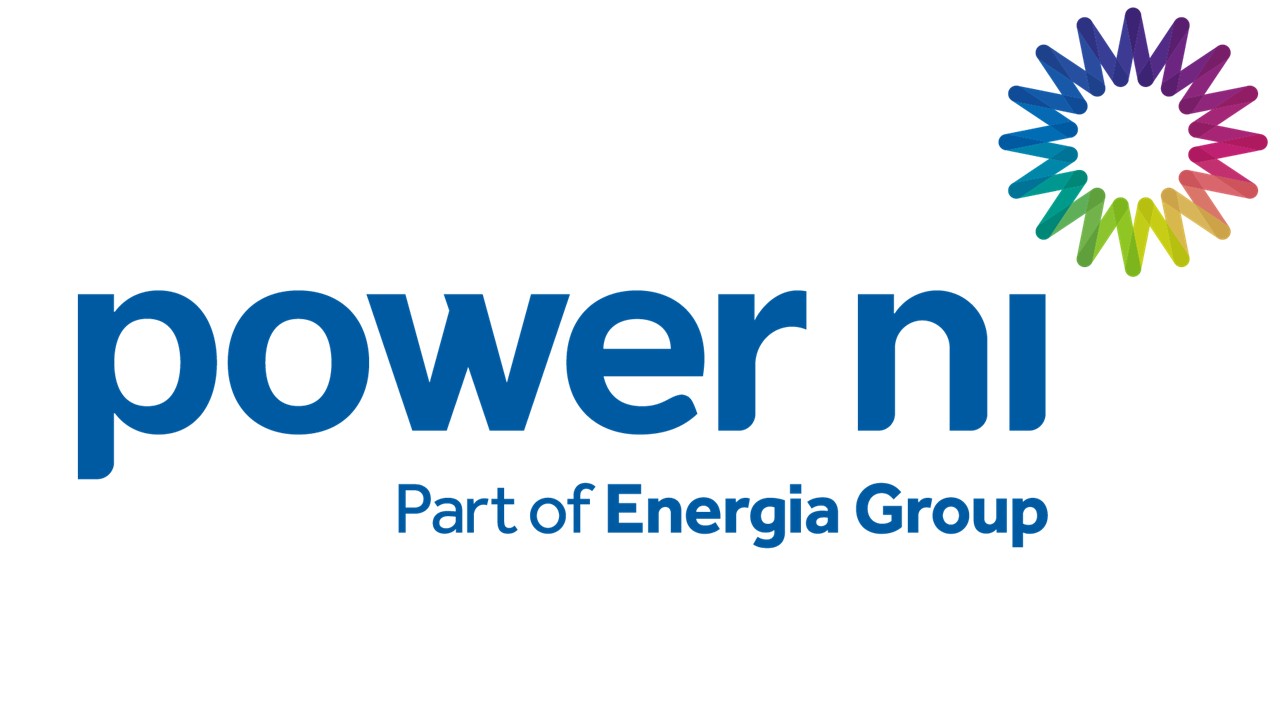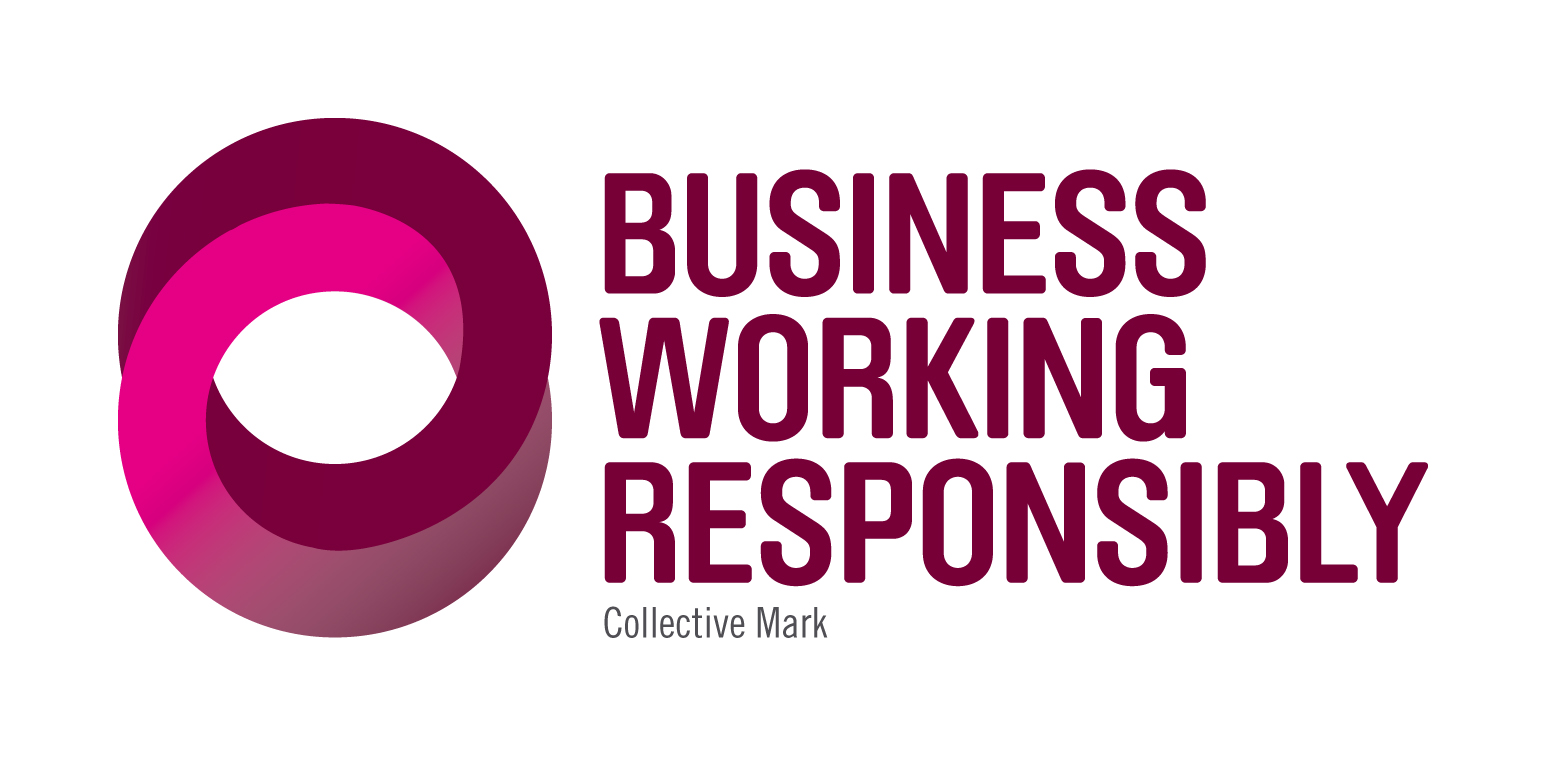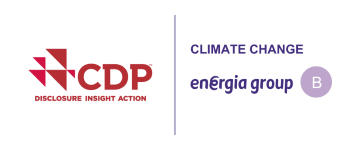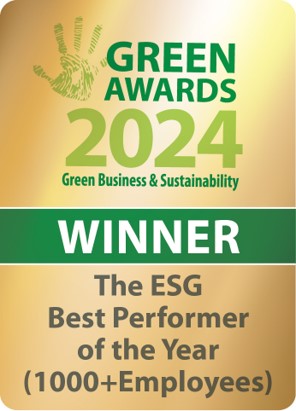The future of energy looks bright
With multiple forward-thinking projects across the domestic and industrial spheres which include hydrogen electrolysis and anaerobic digestion, Energia is at the forefront of renewable energy. Article by Kirstie McDermott, Irish Times.
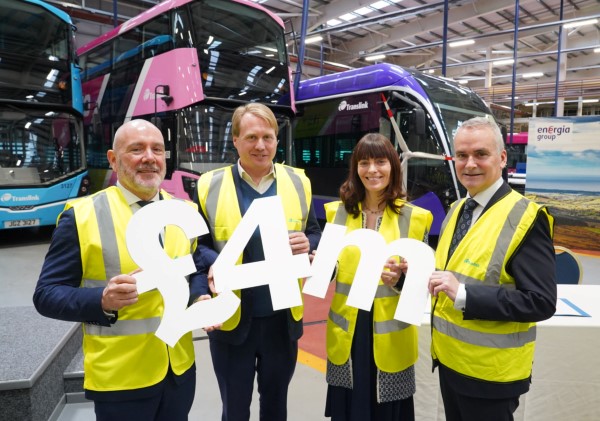
Energia Group CEO Ian Thom, Northern Ireland Minister for Infrastructure Nichola Mallon, Wrightbus Chairman Jo Bamford and Translink CEO Chris Conway at the press announcement of its partnership with Translink to supply hydrogen to public buses in Belfast
Energia is one of the leaders in renewable energy production on the island of Ireland, accounting for 25 per cent of the country’s total energy supply. It also accounts for 21 per cent of renewable electricity generation in Ireland.
Now operating for over twenty years in the Republic of Ireland market, the company can trace its heritage back to the early years of the 20th century and the plethora of small generating companies which supplied power to towns and villages around the country at the time.
“We were known as the Viridian Group in Northern Ireland,” says Garret Donnellan, head of strategy and corporate development with Energia. “This was formerly Northern Ireland Electricity, the state-owned electricity utility which was privatised in the early 1990s by the UK government.”
The deregulation of the electricity market in the late 1990s enabled the company to enter the market in the Republic of Ireland. It was initially a supply business which purchased electricity on the wholesale market for resale to business customers. That was followed by the development of two gas-fired generating stations in Huntstown, near Finglas in Dublin, and the company entered the domestic market in 2014.
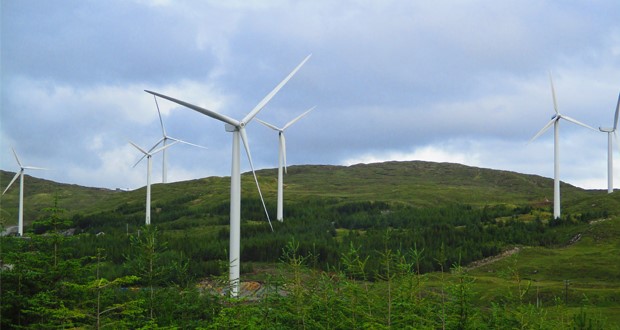
Energia’s largest windfarm in Meenadreen, Co Donegal
It was an early entrant to the Irish renewables market back in 2002 through the ReFIT scheme (Renewable Energy Feed-in Tariff), a government incentive for companies to invest in renewable energy. “It encouraged suppliers to enter into long term contracts with renewables developers,” Donnellan explains. “We have continued to grow our share of the market since then and now supply 1 GW of green power and own 22 onshore windfarms. We also have capacity contracted from other developers.”
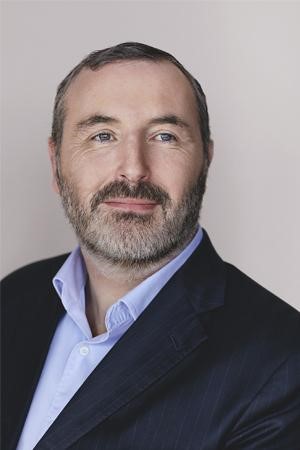
Garret Donnellan, head of strategy and corporate development with Energia
Looking to the future, he points out that the government’s Climate Action Plan (CAP) is aimed at addressing three main areas of energy consumption – electricity, heat and transport. “Decarbonisation is a lot easier with electricity,” he notes. “Much of the decarbonisation of the other two will be achieved through electrification. We are seeing heat pumps which rely on electricity to operate being installed in new homes. In transport there is a big push towards electric vehicles.”
The CAP has set a target of increasing the amount of renewable power on the electricity grid from 40 to 70 per cent. “This is a challenge,” he says. “The system operator is responsible for keeping the lights on and the intermittent nature of the technology is a problem. The operator has to try to match generation with demand and they need flexible generation to meet the peaks and troughs in demand and supply. The last thing they want is load shedding with large customers having to shut down operations in order to reduce demand.”
Hydrogen electrolysis for transport
Energia is playing its part in the development and deployment of new sources of renewable energy. One of these is hydrogen electrolysis. This uses old school chemistry to pass electrical current through water to separate it into hydrogen and oxygen molecules. Energia is developing an electrolyser plant at one of its wind farms in Northern Ireland. The hydrogen produced will be used to fuel three Translink buses in Belfast on a trial basis.
“Electric vehicles (EVs) are the solution for the domestic fleet,” says Donnellan. “But when it comes to large scale transport, hydrogen fuel cells are better. The contracts with Translink and project partners are signed, and we hope to have the project up and running towards the end of the year. This is at quite a small scale, but we feel we are at the first step in something very interesting. Having co-located hydrogen electrolysers at windfarms can maximise power output regardless of system needs and the hydrogen can be used to decarbonise large scale transport on the island. It’s a win-win for everyone.”
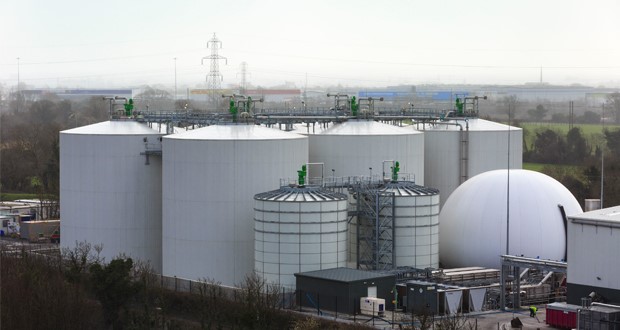
The new bioenergy plant at Huntstown, Dublin
Another very interesting technology which the company is investing in is anaerobic digestion. This uses a natural process to produce biogas from organic waste. “It can be used in transport, directly injected into the natural gas grid or used in a combined heat and power (CHP) plant. We are in the middle of commissioning the largest anaerobic digestor on the island of Ireland in Huntstown. This is a perfect example of the circular economy. Food comes from the land, the waste goes into the brown bin, that goes to the anaerobic digestor which produces electricity and heat. The residue is an organic fertiliser which can be reused on the land to help grow more food.”
Solar PV panels are becoming more popular with consumers who are combining them with battery storage so that they can use the electricity when they need it. “We see ourselves as an enabler of that” says Donnellan. “We are partnering with Eirgrid on a solar energy project in Dublin where we have rolled out solar PV to 20 customers. We have provided the solar panels and battery storage. What we are looking at is the ability of the consumer to sell excess power back to the grid and we are working with Eirgrid to develop the software and technology for that.”
This will enable consumers to get payback on their investment in solar systems much faster than if they were solely relying on annual savings on their electricity bills.
Electric Vehicle adoption
Energia is also facilitating the switch to EVs. “One of the problems facing an EV buyer is where they are going to charge it,” Donnellan notes. “We will work with car dealers to install home charging points for customers. They won’t have to worry about finding a contractor to carry out the installation or anything like that. Almost 80 per cent of charging will happen at home and people will only use filling stations in an emergency. We are providing charging infrastructure at home and in places of work and aligning ourselves with EV charger manufacturers to roll them out wherever they are required to encourage our customers to make the switch to an EV.”
“Ireland has made good progress towards its renewable energy targets until now,” he concludes. “Achieving the CAP targets will require a mix of new technologies including onshore wind, solar PV, hydrogen and anaerobic digestion and Energia is committed to playing its part in their development and deployment in the years to come.”

